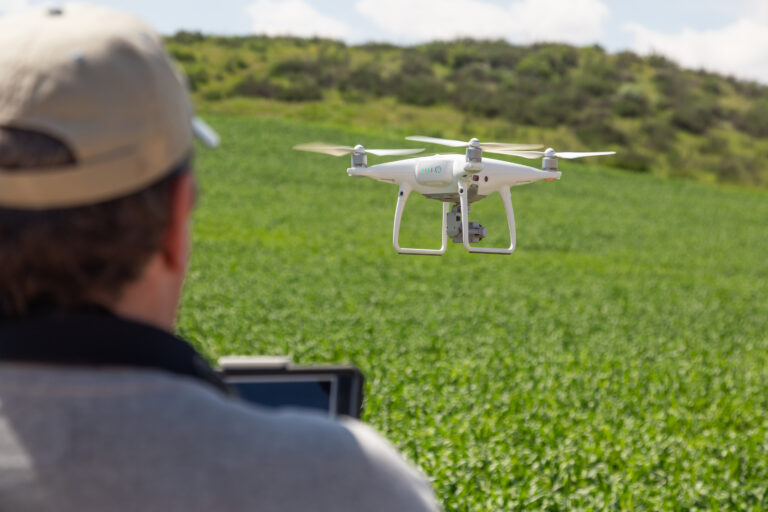Protect your crops with AI: Improve yields with smart pest management
introduction
Hello, smart farmers. Today we provide great information on the role of AI in crop protection to improve sustainable yields. A variety of pests infest agricultural crops every year, and heavy chemicals are used to control these pests. Pest infestations cause significant yield losses and threaten global food security. Current pest management involves overuse of pesticides, leading to soil nutrient depletion and environmental degradation. In recent years, innovations in pest control using artificial intelligence (AI) technology have emerged as smarter and more sustainable pest management tools for farmers. Leverage digital pest management tools that use machine learning, IoT, image recognition, and AI-driven technologies to proactively detect pest infestations. This accurate pest prediction allows farmers to take appropriate steps to reduce the use of chemical pesticides and achieve sustainability. In this article, we have discussed how ‘AI’ in pest management works smartly to increase crop yields.
1. Why smart pest management is essential today
- Pests affect agricultural profits
- Pests destroy approximately 40% of major crops such as rice, wheat, and maize each year.
- According to food and agriculture organization According to (FAO), billions of dollars are lost in the agricultural sector due to pest infestations.
- Disadvantages of traditional pest control
- Excessive use of chemical pesticides on crops damages ecosystems and contaminates food.
- Monitoring crop pests requires more effort and is less accurate.
- Farmers should spend more on chemicals that are not viable in small-scale farming.
- Growing demand for environmentally friendly pest control
- Climate change is causing many pest outbreaks, so smart, less chemical pest management is needed.
- Farmers seeking more precise pest control management than traditional management methods.

2. Smart pest control system using AI
- Data collection and analysis
- First and foremost, we use sensors and drones (IoT devices) to collect real-time pest activity data.
- The data collected above will be integrated with weather patterns, soil conditions, and crop health for further analysis.
- Advanced data-driven algorithms
- Internally built algorithms identify pests and attempt to detect patterns of occurrence that can help with predictive mitigation.
- Machine learning models become more accurate over time with larger pest datasets.
- Real-time action planning
- Farmers can use AI systems to respond instantly to control specific pests.
- Farmers receive alerts and can quickly respond to prevent further infestations on their crops.
In case you missed it: What is precision agriculture and how does it work?
3. Main applications of AI in smart pest control
- Automatically identify pests
- Distinguish between pests and beneficial insects using image recognition technology.
- Automatic pest traps capture images and classify pests instantly.
- Pest outbreak prediction using AI
- When the collected pest data is integrated with weather and crop cycles, AI can determine pest movement.
- This occurrence forecasting and forecasting helps farmers plan preventive measures in advance.
- AI-powered targeted pesticide deployment
- Drones integrated with AI are revolutionizing pesticide spraying through targeted spraying with precision technology.
- Optimize pesticide use using AI to reduce operational costs and environmental damage, resulting in sustainability.

4. Transformative benefits of AI in smart pest control
- Improving crop efficiency
- Save time and resources and reduce operational costs.
- Easily handle pest activity on your farm by automating labor-intensive tasks.
- Improves the accuracy of pest detection and control.
- Improving environmental friendliness
- Sustainability is achieved by minimizing the use of pesticides, which also reduces damage to the environment.
- Protect beneficial pests by promoting biodiversity.
- cost reduction
- AI-powered pest control reduces crop losses and increases yields.
- It also reduces input costs and increases farmers’ income.
- adaptability
- Easily adaptable to small and large scale cropping activities.
- AI in pest management is suitable for most crops and all geographic regions.
- Real-world impact of AI in pest control
- This practical experience shows the effectiveness of this approach. Mr Joseph D, a rice and wheat farmer, told a news channel: “We are very grateful for the rice and wheat farmer. “After integrating and automating an AI-powered pest monitoring system on our farm, we saw significant cost savings in pesticides, reduced losses and increased yields by proactively treating pests.” obtain.

5. Barriers to implementing AI-based pest control systems
- Large initial cost
- Drones, sensors, and associated apps and software require significant initial investment.
- Small farmers may not be able to afford it.
- specialized knowledge
- Farmers will need technical training to operate drones and other AI systems.
- Many farmers are yet to realize the benefits of AI-based pest control in rural areas.
- Data constraints
- AI-powered systems require large datasets to accurately predict pests.
- In many regions where available data is limited, this cannot be implemented accurately.
- Reliability challenges
- AI predictions can be affected by changes in weather and environmental patterns.
- Achieving reliable performance and accurate results under a variety of conditions is a challenge for farmers.

6. Real-world applications of AI in pest control
- wheat field US
- AI-powered drones integrated with IoT sensors are used to detect early signs of pest activity in large wheat fields. This has reduced pesticide use by 40% in many states, saving millions of dollars. This also significantly reduced input costs.
- corn field in brazil
- Many farmers have implemented AI-powered pest monitoring technology in their corn fields and seen a 20% increase in yield and reduced pesticide costs.
- Rice fields in Southeast Asia:
- Rice farmers in Thailand, Vietnam, the Philippines, and Indonesia using drones equipped with AI systems have reduced pesticide inputs by 40% by targeting the precise location of pests and preventing further spread.
- Farmers also reported a 25% increase in rice yield.
- European vineyards:
- AI-powered drones with sensors and smart pest traps have identified pest infestations at an early stage, helping farmers prevent pest infestations and reduce yield losses at minimal cost. This saved millions of euros worth of vineyard crops.
- Indian cotton plantation
- Cotton farmers rely heavily on AI-powered pest control drones to predict pink ball bug outbreaks with 90% accuracy.
- In cotton fields where pesticide usage is reduced, farmers are saving thousands of rupees by significantly reducing pesticide costs.
In case you missed this: A guide to understanding the importance of drones in agriculture
7. Future trends and innovations in AI for pest control
- Pest control using blockchain technology
- Improve accurate traceability of pest control methods and practices.
- Increase consumer confidence with a traceable food supply chain.
- Real-time pest detection system
- AI-powered devices work together to create a unified surveillance network in real time.
- Cover a vast range of crops with accurate forecasts.
- Automatic pest control technology using AI
- Robots integrated with AI and AI pest control drones work independently.
- Fully automated digital tools for pest monitoring reduce reliance on labor.
- Customized AI application
- AI-equipped equipment tailored to specific crops and regions enables more accurate pest management.
- These AI apps focus on developing localized pest and weather-related data stores to improve accuracy.

8. Traditional pest management and AI-based pest management
| side | Traditional pest control practices | Pest control practices using AI |
| accuracy | Requires manual observation | use exact calculations |
| Environmental impact | damage the environment | Up to 40% reduction in pesticide usage |
| Fee | expensive | Lower due to targeted actions |
| Scalability | limited to small-scale crops | Scalable to large-scale agricultural operations |
| Pest prediction | Responds to pest outbreaks. | real time and accurate |

conclusion
Advances in technology and increased adoption of AI in crop protection and pest control management are driving major changes in agriculture. This allows farmers to achieve real-time pest monitoring in agriculture. Using automated pest detection systems and automated pest traps for crop protection, farmers can reduce their pesticide inputs by 40%. Innovations in pest control using AI have increased yields by 20-30% in most introduced crops. To achieve sustainability and reduce chemical emissions into the soil, we all need to implement smart AI-powered pest monitoring systems.







